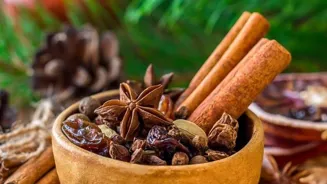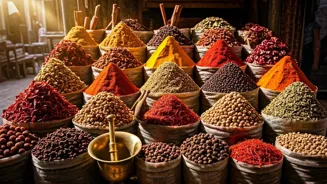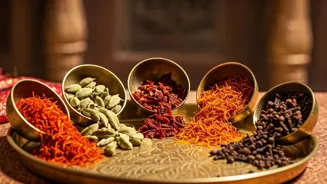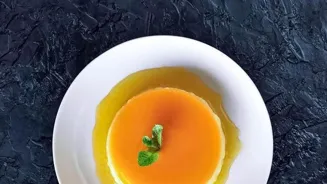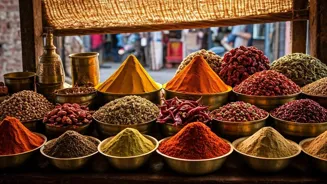Unleash the True Flavors of India: 5 Techniques to Elevate Your Cooking! Dive into the secrets of authentic Indian cuisine
Namaste, food lovers! Are you tired of Indian food that tastes... well, not quite
right? Want to bring the real taste of India to your own kitchen? Then you've come to the right place.
Forget the watered-down versions and get ready to explore five essential cooking techniques that will transform your Indian cooking from so-so to spectacular. These techniques are the foundation of authentic Indian flavors, passed down through generations of cooks.
So, grab your apron, sharpen your knives, and let's get cooking!
Tempering (Tadka/Chonk): Releasing the Aroma
Tempering is the magical process of heating oil or ghee and then adding whole spices, herbs, and other aromatics to it. This releases their essential oils, creating a fragrant and flavorful infusion. This infused oil is then added to a dish, usually as a finishing touch, to boost its flavor profile.
Tadka, or Chonk, is not just a garnish, it is a way to get the most flavor out of all of the spices being used. It's the secret weapon behind so many delicious Indian dishes, from dals to curries to even humble vegetable preparations.
To temper successfully, make sure your oil or ghee isn't too hot – you want the spices to sizzle, not burn. Start with whole spices like cumin seeds, mustard seeds, and dried chilies, followed by aromatics like ginger, garlic, and curry leaves.
Pay attention to the order in which you add the spices – some spices, like mustard seeds, need to be added first to allow them to pop and release their flavor. The tempering process can be done at the beginning of a recipe or at the end.
If done at the beginning, the tempering oil is used to cook the rest of the ingredients. If done at the end, the tempered oil is drizzled over the finished dish to add a final burst of flavor and aroma. Experiment with different spice combinations to create your own signature tadka blends.
Bhunao: The Art of Sautéing and Building Flavor
Bhunao is often translated as "sautéing," but it's so much more than that. It's a slow and patient process of cooking ingredients, especially onions, ginger, garlic, and spices, in oil or ghee over medium heat until they are browned and fragrant which results in a lovely masala.
This develops a deep and complex flavor base for the dish. The key to a good bhunao is constant stirring to prevent sticking and burning. It's about coaxing the natural sweetness and umami out of the ingredients.
The process often begins with sautéing onions until they are golden brown and caramelized. This can take time and patience, but it's worth it for the depth of flavor it adds. Next, ginger and garlic are added and sautéed until fragrant.
Then come the ground spices, like turmeric, cumin, coriander, and chili powder. The spices are cooked in the oil until they release their aroma. This stage can burn easily, so remember to stir frequently.
A little water can be added to prevent sticking and create steam, which helps to cook the spices evenly. The Bhunao process is used in a variety of Indian dishes, from curries to biryanis. It's a essential technique for creating authentic and flavorful Indian food.
Dum Cooking: Slow Cooking for Maximum Flavor
Dum cooking is an ancient Indian technique of slow-cooking food in a sealed pot over low heat. The word "dum" means "to breathe" in Persian, and it refers to the steam that circulates within the pot, cooking the food gently and evenly.
This method allows the flavors to meld together beautifully, resulting in a dish that is incredibly rich and aromatic. The beauty of this kind of cooking method is no flavors are allowed to escape. The complete flavour of the veggies and the spices stays within, making it a wonderful taste.
Traditionally, the pot is sealed with dough to prevent any steam from escaping. This can be done with a simple flour and water dough, or you can use ready-made roti dough. The pot is then placed over very low heat and left to cook for several hours.
The slow cooking process allows the ingredients to tenderize and absorb the flavors of the spices. The result is a dish that is incredibly flavorful and tender. Dum cooking is often used to make biryanis, curries, and other dishes that benefit from slow cooking.
It's a time-consuming process, but the results are well worth the effort.
Roasting Spices: Unlocking Hidden Flavors
Roasting spices is a simple but incredibly effective technique that can dramatically enhance the flavor of your dishes. Roasting brings out the essential oils in the spices, intensifying their aroma and complexity.
It also helps to remove any moisture, which can prevent them from browning properly during cooking. By understanding each spice's best, it brings out the earthy flavours and brings a uniqueness to each dish.
To roast spices, simply heat them in a dry pan over medium heat for a few minutes, until they become fragrant. Be careful not to burn them, as this will make them taste bitter. Once the spices are roasted, you can grind them into a powder or use them whole.
Roasted spices are a great way to add depth and complexity to curries, dals, and other Indian dishes. Experiment with different spice blends to create your own unique flavor combinations. This technique is very important if one wants to taste what mother earth has offered.
The best flavour comes out using this technique.
Infusing Flavors with Aromatics: The Power of Herbs and Spices
Indian cuisine is known for its complex and aromatic flavor profiles, and this is largely due to the generous use of herbs and spices. But simply adding herbs and spices to a dish isn't enough – you need to know how to use them effectively to infuse your food with their flavor.
This is the essence of an indian dish and brings its speciality.
One way to do this is to add herbs and spices to oil or ghee and heat it gently. This allows the flavors to infuse into the fat, which can then be used to cook the rest of the dish.
Another way is to add herbs and spices to a marinade. This allows the flavors to penetrate the food, resulting in a more flavorful and aromatic finished product. You can also add herbs and spices to a simmering sauce or curry, allowing the flavors to meld together over time.
Experiment with different combinations of herbs and spices to create your own unique flavor profiles. Don't be afraid to get creative and try new things. The possibilities are endless. So, go ahead, use this guide and bring the true Indian food to your tabel.
